
Designers reveal how many colors you should have in your home and when it comes to crafting an inviting and visually captivating living space, one key factor often steals the spotlight: the color palette. Designers across the globe are well-aware of the transformative power that colors hold, as they can influence mood, perception, and even functionality within a home.
In this exploration, we delve into the intriguing question: How many colors should you have in your home? Through a careful analysis of design principles, real-life insights, and expert advice, we’ll unravel the art behind selecting the perfect color scheme to curate an ambiance that resonates with your style and personality.
The Science of Color Perception
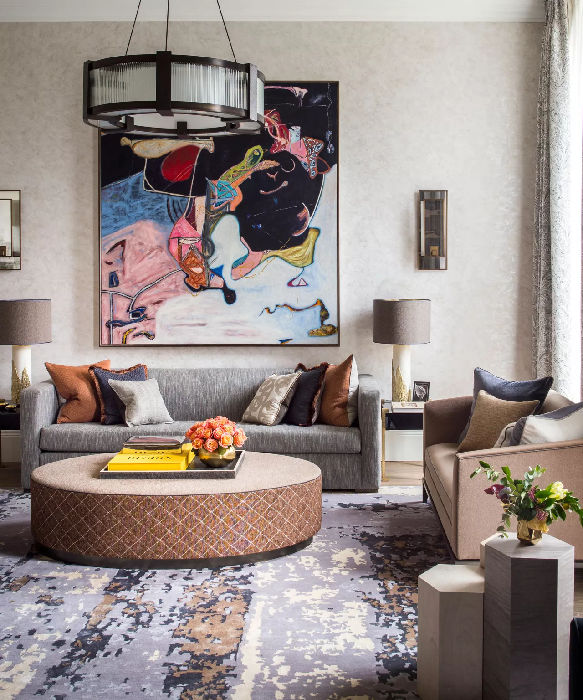
Before we dive into the specifics of color selection, let’s touch on the fascinating science behind how our brains perceive colors. Colors have the remarkable ability to evoke emotions and trigger sensory responses, making them a potent tool in interior design. However, striking the right balance is crucial, as an excess of colors can lead to sensory overload, while too few can result in monotony.
The Rule of Three: A Designer’s Perspective
Designers often turn to the “Rule of Three” as a guiding principle for color selection. This rule suggests that the optimal color palette for a room comprises three main colors: a dominant hue, a secondary hue, and an accent color.
“There’s no one-size-fits-all color palette, some spaces thrive on a bold trio, while others whisper in calming neutrals. The key is balance – ensure your chosen colors complement each other, creating a sense of cohesion rather than chaos.
Nate Berkus, award-winning designer and TV personality. “
Related Post: The Rule Of Three For Decorating Your Home
Imagine a living room with a calming seafoam green as the dominant color, complemented by a soothing beige as the secondary hue, and energized by pops of vibrant coral as the accent. This approach allows for depth, contrast, and a harmonious visual flow.
“If you are looking for a way to style your space with wall art without breaking your piggy bank, then I recommend reading “10 Surprising Benefits of Printable Wall Art”
Beyond Three: Exploring Variation
While the Rule of Three provides a solid foundation, it’s essential to note that creativity knows no bounds. Some designers choose to expand the palette slightly, incorporating additional shades or tints to amplify the richness of the ambiance. For instance, a modern kitchen might showcase a quartet of colors, with a soft gray joining the trio mentioned earlier, adding a touch of elegance and versatility.
Real-Life Inspirations
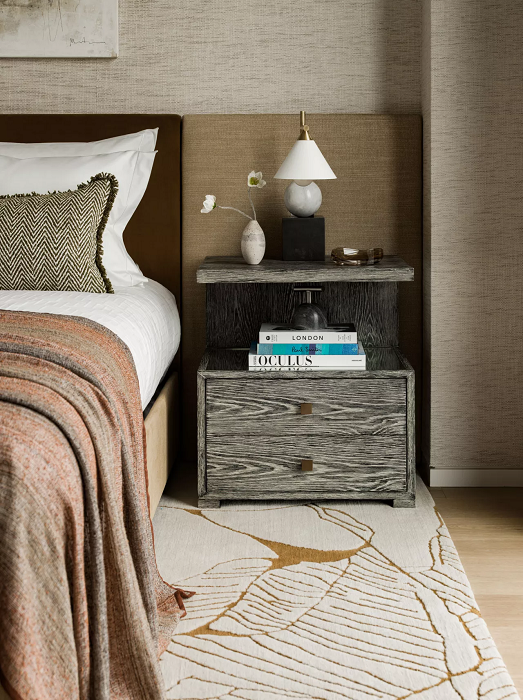
To truly grasp the impact of color palettes, let’s peek into real-life scenarios where designers masterfully wielded the brush of colors to transform spaces and lives.
The Cozy Monochrome Haven
In a snug urban apartment, designer Jane Harris weaved a monochrome marvel. With varying shades of charcoal, slate, and ivory, she curated an atmosphere that exudes both warmth and sophistication. By playing with textures and patterns within the monochrome spectrum, she elevated the space beyond the constraints of a single color.
A Playful Symphony of Tones
Children’s bedrooms often present a delightful challenge, demanding colors that inspire creativity while nurturing tranquility. Designer Mark Thompson orchestrated a symphony of pastels, harmonizing mint, lemon, and baby blue. This dynamic trio not only encourages the young minds to flourish but also offers a soothing haven for restful sleep.
“Think of your home as a musical composition, different colors are like instruments, blending to create a unique melody. Don’t get stuck on a specific number; focus on finding hues that resonate with you and work together in a pleasing rhythm.”
Joanna Gaines, co-founder of Magnolia Market
The Art of Visual Balance
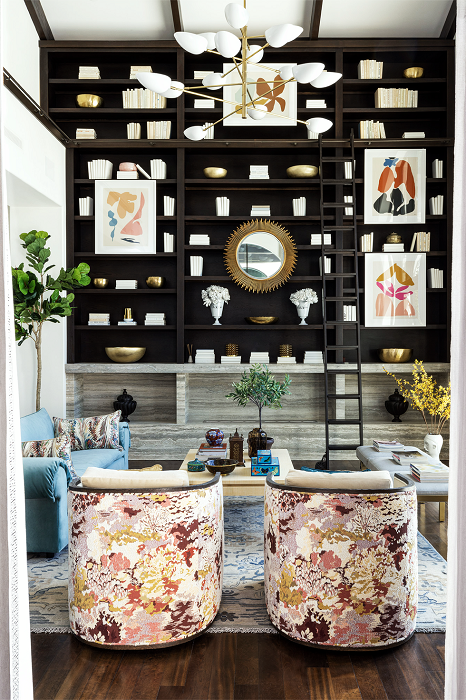
One of the most captivating aspects of color palettes is their role in achieving visual balance. Designers often employ color to manipulate perceptions of space, size, and proportions.
Embracing Openness with Light Colors
In smaller rooms, the choice of colors can significantly impact the perceived size. Lighter colors, such as pale yellows and soft pinks, have the magical ability to open up spaces and create an illusion of airiness. By allowing light to dance freely, these hues erase the boundaries of confinement.
The Intimate Allure of Dark Elegance
On the other hand, darker shades possess an unparalleled allure in larger rooms or areas where intimacy is desired. Rich burgundies, deep emeralds, and velvety blues can transform cavernous spaces into cozy sanctuaries, wrapping inhabitants in a sense of comfort.
Color Psychology: Beyond Aesthetics
Delving deeper into the realm of color psychology unveils an intriguing layer of complexity. Colors have the remarkable ability to impact our emotions and behaviors, transcending mere aesthetics.
Serenity in Soft Hues
Pastel colors like lavender and powder blue exude tranquility and relaxation. They are ideal for creating serene bedrooms or nurturing reading nooks, where unwinding after a long day takes precedence.
Energizing with Bold Tones
If you seek vibrancy and energy, turn to bold colors such as fiery red or electric yellow. These shades inject enthusiasm into social spaces like dining rooms or entertainment areas, where lively conversations and laughter flow freely.
Crafting Your Own Color Symphony: A Step-by-Step Guide
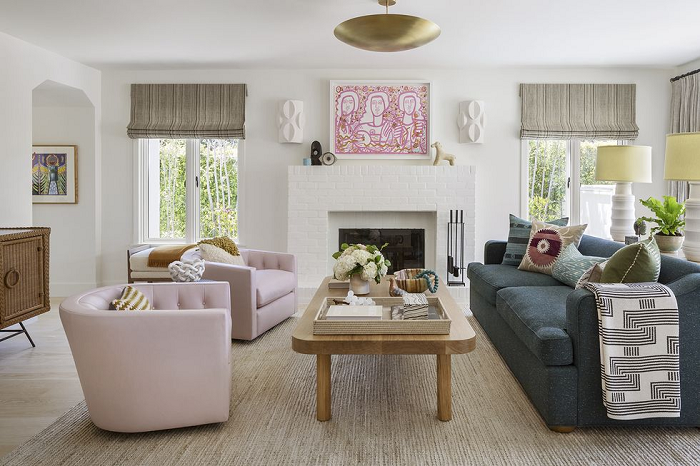
Designing a captivating color palette for your home is an exciting endeavor that requires a delicate balance of creativity and strategy. By following a step-by-step approach on how many colors you should have in your home, you can curate a harmonious color plan that resonates with your space and preferences.
“Your home should tell your story, don’t be afraid to layer in pops of color that reflect your passions, travels, or even a favorite painting. Let your personality shine through, and the number of colors will naturally fall into place.”
Emily Henderson, founder of Emily Henderson Design.
Step 1: Understand Your Space
Begin by taking a close look at the architecture and layout of your room. Consider the sources of natural light, the size of the space, and any existing elements such as furniture or fixtures. Let these features guide your color choices. For instance, if you’re working with a room that receives ample sunlight, you might opt for cooler tones like soft blues and greens to enhance the airy ambiance.
Step 2: Select Your Dominant Color
Choose a dominant color that sets the foundation for your palette. This hue will be the most prominent and should reflect the mood you wish to create. If you’re aiming for a cozy and intimate atmosphere in your living room, a warm neutral like caramel or terracotta could be your ideal choice. Apply this color to larger surfaces such as walls or main furniture pieces.
Step 3: Introduce Secondary Shades
Next, introduce secondary colors that complement your dominant hue. These colors will add depth and interest to your space. Let’s say you’ve selected a rich navy blue as your dominant color. Complement it with secondary shades like muted gold or sage green. These secondary colors can be incorporated through upholstery, curtains, or even an accent wall.
Step 4: Play with Accent Colors
Accent colors are where you can inject personality and flair into your design. These hues will appear in smaller, impactful details like throw pillows, artwork, or decorative objects. Going back to our navy blue example, consider a vibrant coral or mustard yellow as your accent colors. These pops of color will create focal points and add a dynamic touch to your space.
Step 5: Test and Refine
Before finalizing your color plan, it’s crucial to test the chosen colors in different lighting conditions. Colors can appear differently under natural daylight and artificial lighting, so it’s wise to sample paint swatches and fabric samples in various parts of the room. This step ensures that your chosen colors harmonize seamlessly and create the desired ambiance.
Step 6: Embrace Visual Balance
As you implement your color plan, keep the principles of balance and proportion in mind. Distribute your colors in a way that guides the eye and creates visual harmony. For example, if your dominant color covers 60% of the room, allocate 30% to secondary shades and the remaining 10% to accent colors. This adherence to the 60-30-10 rule guarantees a well-balanced and visually engaging composition. Below you’ll find a more detailed explanation of this rule.
Step 7: Reflect Your Personality
Lastly, infuse your color plan with elements that reflect your personal style and preferences. Whether it’s a collection of vintage ceramics or a series of abstract paintings, these cherished items can contribute to the overall color story of your space. Let your personality shine through in the small details.
By following this step-by-step guide on how many colors you should have in your home, you’ll navigate the intricate process of color selection with confidence and finesse. Your home will become a canvas where every color stroke tells a story, creating a symphony that resonates with your lifestyle and evokes the emotions you wish to inspire.
The 60-30-10 Rule: Your Color Blueprint
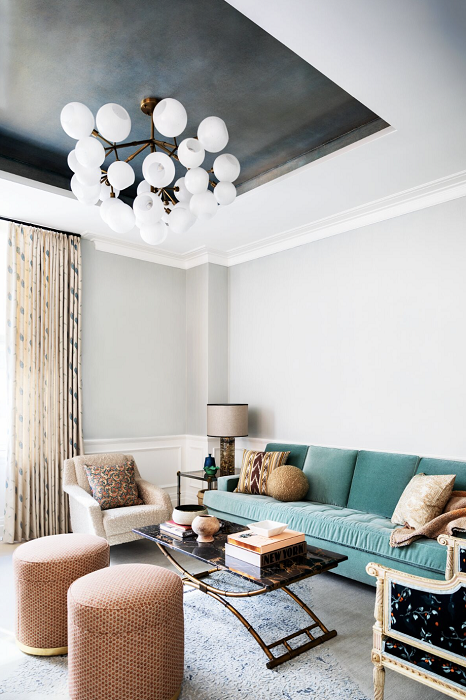
Imagine having a blueprint that effortlessly guides you through the process of color selection. The 60-30-10 rule is exactly that – a foolproof formula that designers swear by to create an appealing and harmonious color scheme.
Related Post: Transform Your Home with the 60/30/10 Rule: Interior Design Made Easy
The Dominant Color (60%)
At the heart of the 60-30-10 rule lies the dominant color – the hue that forms the canvas of your space. It covers a majority of the room and serves as the backdrop against which other colors shine. Typically, this color is applied to walls, larger furniture pieces, and prominent elements.
Imagine a serene living room washed in a calming shade of light gray. This dominant color sets the tone, creating a soothing foundation for the entire space.
The Secondary Color (30%)
The secondary color steps in to complement the dominant hue, adding depth and visual interest. This color occupies about 30% of the room and is often used for upholstery, draperies, and accent furniture.
Continuing with our living room example, a soft seafoam green could serve as the secondary color, gracefully enhancing the tranquility of the space while creating a gentle contrast with the dominant gray.
The Accent Color (10%)
Here’s where the magic truly happens – the accent color, a mere 10% of the palette, injects life, energy, and a touch of excitement. Think of it as the sprinkle of seasoning that elevates a dish from ordinary to extraordinary. This color is reserved for accessories, throw pillows, artwork frames, and other smaller decor elements.
In our living room narrative, vibrant coral emerges as the accent color, strategically placed in cushions and a statement artwork on the wall. The result is a space that comes alive with pops of color, creating a captivating focal point.
Mastering the Symphony of Colors
The 60-30-10 rule isn’t just a guideline; it’s an art form that transforms your home into a masterpiece. This method ensures that your space is both visually balanced and visually stimulating, capturing the essence of thoughtful design.
Remember, the key to mastering this rule lies in understanding that each color plays a specific role in the composition. The dominant color provides cohesion and a sense of unity, while the secondary color adds dimension and nuance. The accent color, with its modest yet impactful presence, draws the eye and lends a touch of personality.
“Color is an adventure, not a math equation, experiment! Play with unexpected combinations, embrace bold accents, and don’t be afraid to adjust as you go. Your home should be a canvas for joyful exploration, not a rigid color-counting exercise.”
Kelly Wearstler, renowned designer and author
By embracing the 60-30-10 rule, you’re equipped with a practical framework to bring your color palette to life. Whether you’re designing a cozy bedroom retreat or an inviting dining area, this rule acts as your North Star, guiding you through the complex terrain of color selection.
In the end, the beauty of the 60-30-10 rule lies in its simplicity. It’s an elegant formula that empowers you to curate a space that not only resonates with your style but also captures the essence of expert design principles. So, as you embark on your color journey, remember the magic numbers – 60, 30, and 10 – and watch as your home transforms into a visual symphony of colors.
Most Popular Post:
10 Surprising Benefits of Printable Wall Art
15 Must-Have Accessories For Styling A Coffee Table
How to Choose the Perfect Interior Color Scheme for Your Home
Expert Guide On How To Buy A Rug For Each Room
Conclusion
In conclusion, in the grand tapestry of interior design, colors stand as both the warp and weft, weaving stories of style, comfort, and expression. Designers have long understood the delicate dance of hues, employing them as brushes on the canvas of home.
From the cozy embrace of monochromes to the lively symphony of complementary tones, the ideal color palette is a symphony that resonates with your lifestyle. So, as you embark on your design journey, remember the wisdom of designers who reveal that the magic of colors lies in their ability to transform mere spaces into vibrant, living poetry.
How Many Colors You Should Have In Your Home–(FAQs)
1. Why is color selection important in home design?
Color selection is a crucial aspect of home design as it sets the tone, mood, and ambiance of your living space. Colors have the power to influence emotions, perceptions, and even functionality within a room. Choosing the right color palette can transform a space from ordinary to extraordinary, creating a harmonious and visually pleasing environment.
2. How do I choose the right color palette for my home?
Choosing the right color palette involves considering factors such as natural light, room size, existing furniture, and personal preferences. Begin by understanding the architecture of your space and selecting a dominant color that reflects the desired mood. Complement it with secondary and accent colors that add depth and interest. Test the chosen colors in different lighting conditions to ensure harmony and balance.
3. What is the 60-30-10 rule and how do I use it?
The 60-30-10 rule is a color scheme guideline that suggests dividing your color palette into three main proportions: 60% dominant color, 30% secondary color, and 10% accent color. This rule provides a balanced and visually appealing composition. Apply the dominant color to the majority of the room, use the secondary color for furniture and draperies, and introduce the accent color through smaller decor elements.
4. Can I deviate from the 60-30-10 rule?
While the 60-30-10 rule is a widely used guideline, it’s not a strict requirement. Design is about creative expression, and you can certainly adapt the rule to suit your preferences. Some designers choose to use variations of the rule, such as 70-20-10 or 50-30-20, depending on the desired visual impact.
5. How can I create a cohesive color palette for an open-concept space?
For open-concept spaces, maintaining color cohesion is essential to ensure a seamless flow. Choose a consistent dominant color that unifies the entire area. Introduce variations of this color as secondary shades to create a harmonious transition between different zones. Use accent colors strategically to define specific areas and add visual interest.
6. What role does color psychology play in home design?
Color psychology explores the emotional and psychological effects of colors on individuals. Different colors evoke different emotions and moods. For example, blues and greens are often associated with calmness and serenity, while yellows and oranges can convey energy and warmth. Incorporating color psychology into your design can help create spaces that resonate with the desired atmosphere and emotions.
7. Should I follow trends or choose timeless colors?
Both approaches have their merits. Following trends can give your home a contemporary and stylish look, but it’s important to ensure that the chosen trends align with your personal style. Timeless colors, on the other hand, offer longevity and versatility. Consider a balance between current trends and classic hues to create a timeless yet fashionable color palette.
8. How can I incorporate my personal style into my color palette?
Incorporating your personal style involves infusing elements that reflect your tastes, interests, and experiences. Consider using accent colors inspired by your favorite artworks, textiles, or travel experiences. Incorporate meaningful decor pieces that carry sentimental value. Your color palette should not only be visually pleasing but also a reflection of your unique personality.
9. Can I change my color palette over time?
Absolutely, your color palette isn’t set in stone. As your preferences and lifestyle evolve, you can update your color scheme to align with your current tastes. Consider repainting walls, updating upholstery, or changing decor elements to breathe new life into your space. Flexibility in color selection allows you to create a home that grows and adapts along with you.
10. Where can I find inspiration for my home color palette?
Inspiration for your home color palette can be found everywhere – from nature and art to fashion and travel. Explore design magazines, online platforms, and social media for ideas. Create mood boards or collages to visualize how different colors come together. Pay attention to colors that resonate with you in everyday life and use them as a starting point for your palette.
Remember, choosing a color palette is a creative journey that allows you to shape your living spaces according to your vision and personality. Whether you’re drawn to bold and vibrant hues or prefer a serene and understated palette, the possibilities are as limitless as your imagination.
CATCH THE LATEST IN HOME DECOR TRENDS:

Steal These 15 Expert-Approved Decorating Secrets

How To Accessories Your Living Room

Small Space? 10 Ways To Make A Room Appear Bigger

Make Your space Look Expensive
GET CAUGHT UP ON ALL THE INSPIRING DECOR TIPS:

18 Fresh Decorating Ideas To Update Your Fireplace

How To Create An Art Gallery Wall

